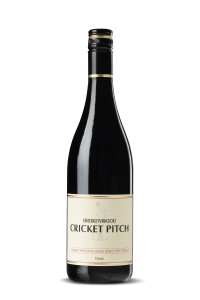The Rhone Valley white variety, viognier, is and will remain a niche variety, representing around two per cent of total white plantings in Australia. Nevertheless, it remains an important variety, principally because of its close relationship to our national red hero, shiraz.
The relationship is both genetic and vinous. In Wine Grapes (Penguin Group, 2012), Jancis Robinson writes, “Through DNA parentage analysis, a parent-offspring relationship has been discovered between viognier and mondeuse blanche, which makes viognier either a half-sibling or a grandparent of syrah”.
The vinous connection comes because in its northern Rhone home, vignerons co-planted and co-fermented viognier with shiraz – notably in the aromatic silky reds of Cote-Rotie.
But largely because of its susceptibility to fungal disease, the variety almost disappeared from France. Plantings had shrunk to just 14 hectares in the northern Rhone by the late 1960s.
However, it staged a remarkable comeback to 4395 hectares in France by 2009. By that time, viognier, with its viscous texture and distinctive apricot-like aroma and flavour and spread around the world, including Australia.
James Halliday reports it as present in the CSIRO’s collection at Merbein, Victoria, under the care of the late Allan Antcliff. Halliday writes, “It was from Antcliff that Baillieu Myer of Elgee Park obtained the first vines for a single-vineyard planting on his Mornington Peninsula vineyard in 1972, around the same time as the late Dr Bailey Carrodus interplanted a small number of viognier vines with shiraz at Yarra Yering”.
Later in the seventies, Heathcote winery in central Victoria probably trialled the variety. And, in the Barossa, Yalumba acquired cuttings from Montpellier, France in 1979. Yalumba propagated these cuttings and planted 1.2 hectares on the Vaughan vineyard, Eden Valley, in 1980. They claimed this as the first commercial viognier planting in Australia. The distinctive and lovely whites subsequently made by Louisa Rose stimulated consumer and winemaker interest in the variety.
As the Yalumba viognier vines matured, Dr John Kirk planted the variety at Clonakilla, Murrumbateman in 1986. In the next decade his son Tim combined grapes from these with vines shiraz to create Australia’s most influential take on the classic Cote-Rotie shiraz-viognier style.
Yalumba’s success with white viognier and Clonakilla’s with the red blend stimulated interest in the variety and plantings took off early in the new century.
Viognier, first showed up in Australian Bureau of Statistics figures in 2003 at 541 hectares, including non-bearing vines. This had increased to 1401 hectares in 2008 (representing about two per cent of Australia’s 72 thousand hectares of white varieties).
However, Winemaker Federation of Australia surveys pre-date ABS data on viognier. The federation’s 1999 survey indicated a total viognier crush of 254 tonnes. The crush peaked at 13,338 tonnes in 2009, then declined slightly in 2010, 2011 and 2012. But the declines probably relates to vintage conditions rather than any decline in plantings.
If we assume a productive capacity of around 13 thousand tonnes, then Australia’s vignerons might produce a little under a million dozen bottles of viognier a year. However, much of the production goes to blends with shiraz (and sometimes other red varieties) and also with other whites, principally viognier’s Rhone relatives, marsanne and roussanne.
Just what goes where is anybody’s guess. But a search of “viognier” on the website of Australia’s largest wine retailer, Dan Murphy, brought up 73 wines – 48 shiraz viognier blends; 19 straight viogniers; one dessert-style viognier; one rose (a blend with grenache); and four white blends.
If this sample is representative, then much of Australia’s viognier goes to blends with shiraz – with one caveat, the blends usually contain only about five per cent viognier.
On its own, viognier’s exotic apricot and ginger flavours and viscous palate perhaps deliver too much flavour for regular drinking. As with other assertive whites – gewürztraminer, for example – a little goes a long way.
But these can be delightful drinks and indeed our winemakers, notably Yalumba and Clonakilla, now produced highly polished versions that retain varietal character without overwhelming the senses.
I review below five examples that recently came across the tasting bench, including three superb wines from Yalumba, true masters of the variety with 29 hectares of viognier on hand.
Yalumba South Australia Organic Viognier 2012 $18.95
Yalumba’s entry-level viognier – pure and apricot-like with smooth texture and fresh, dry finish
Yalumba Eden Valley Viognier 2012 $24.95
A more opulent expression of viognier, incorporating the creamy texture of barrel fermentation and maturation. This is exceptional at the price.
Yalumba The Virgilius Eden Valley Viognier 2010 $49.95
Yalumba’s barrel-fermented flagship introduces an exotic ginger note to the varietal apricot character. This is a sumptuous but restrained, distinctive and delightful wine to savour slowly. Classy.
Mount Avoca Pyrenees Viognier 2010 $24
When first opened, this revealed the distinctive “bacon rind” character of barrel fermentation, a character that overshadowed the fruit. Oaky flavours then cut through the palate, a flavour quite separate from the good fruit.
Quartz Hill Pyrenees Viognier 2011 $32
Shane Mead’s is another fine expression of viognier. While the oak influence is apparent it sits well with the fruit, if not as completely integrated as it is in Yalumba’s wines. The spritely, slightly leaner palate appeals very much.
Copyright © Chris Shanahan 2013
First published 19 June 2013 in the Canberra Times and goodfood.com.au








